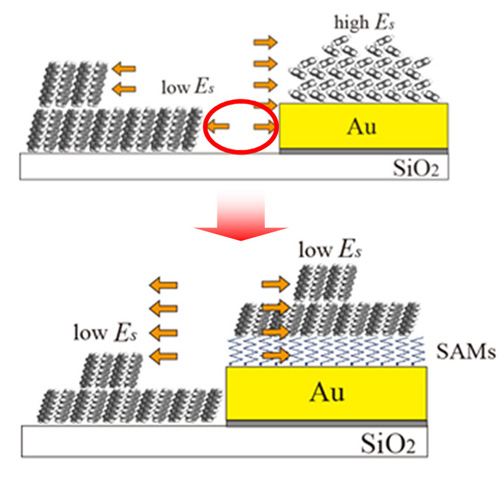Surface and Interface Research group has successfully fabricated ideal organic thin film transistor in collaboration with the University of Tokyo, suppressing defect formation around the electrodes via chemical functionalization of their surfaces. This technique could improve the performance of organic devices for low-cost display control circuits. This work was performed under the Inter-university Cooperative Research Program of the Institute for Materials Research, and the results were published online in Advanced Materials on October 2, 2009, which was also featured in the Nature Asia Materials website.

Upper figure: Thin film deposition on a device structure with bare gold electrodes cannot avoid defect formation around gold (red circle) due to heterogeneous surface energy (Es).
Lower figure: Electrode functionalization by self-assembled monolayers (SAMs) leads to formation of an ideal organic film structure without forming such defects, making the Es more uniform.
